Warships. Cruisers. Original top of Japanese excellence
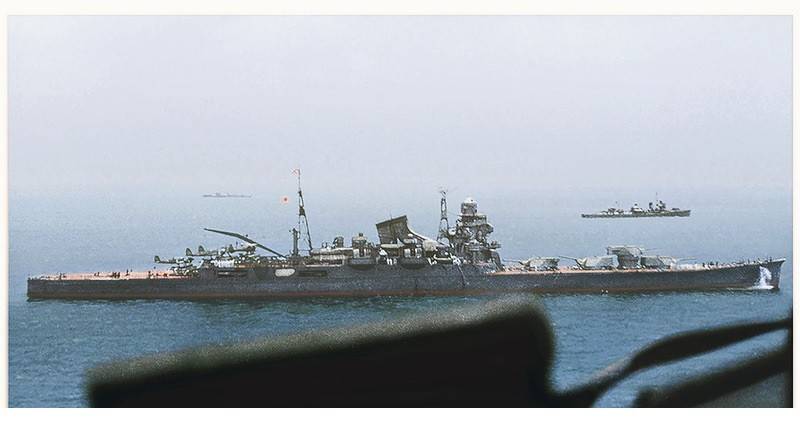
The logical conclusion of the conversation about the heavy cruiser of the Japanese imperial fleet will story about Tone cruisers. In the material about the Mogami, the moment was touched upon when Japan used all the unspent displacement under the contracts to create 6 class B cruisers. Four cruisers are just the Mogami, and two ... And two are our today's heroes: Tone and Tikuma.
The Mogami cruiser was taken as the basis for the design, but over time, the project was very radically redesigned.
Initially, the task consisted of the same fifteen 155-mm guns with an elevation angle of 75 ° (which “in which case” could be changed to 203 mm), eight 127-mm guns in twin installations, twelve anti-aircraft guns, six 610- mm torpedo tubes on board, four seaplanes.
The armor protection is the same as that of the Mogami, that is, it must hold 203 mm shells in the cellar area and 155 mm in the power plant area. The maximum speed is 36 knots (1 less than the Mogami’s), cruising range of 10 nautical miles with an 000-knot course.
However, by the time they were ready, the ships were completely different. All the alterations happened exactly when the first face of the project was not Fujimoto, but Fukuda, which I also mentioned. It was easier to pressure Admirals from the naval General Staff on Fukuda, and the captain of the first rank tried to accomplish everything that the gentlemen of the naval commanders wanted.
As a result, a completely different ship appeared outwardly. And not only externally, however, judge for yourself.
The main innovation: the number of HA towers was reduced by one, removing one tower from the stern in general, and moving the second to the bow. This epoch-making solution made it possible to solve several old problems at once and create a couple of new ones at the same time.
Most importantly, the stern of the cruiser was completely released, where an airdrome was equipped for 6 seaplanes (with catapults, of course), all aviation equipment from the middle was transferred to the stern.
Air defense at the same time reinforced with another pair of 127-mm guns.
Naturally, this still made the ship heavier, and therefore the cruising range was reduced to 8 miles.

The result was a class B cruiser, that is, such a light cruiser, with twelve 155-mm guns and an air group of 6 seaplanes. A sort of scout scout. Naturally, with the prospect of replacing the 155-mm guns of the main caliber with 203-mm.
As I said above, the project had both pros and cons.
The pluses can be considered that the concentration of all the HA barrels in the nose definitely had to increase the accuracy of the volley, reduce the dispersion of shells over long distances, in general, as the artillery platform the ship became much more stable.
The pluses include the transfer of torpedo tubes to the stern, where they could quite easily cripple the ship in the event of enemy shells falling into them. In general, these torpedoes, which the Japanese admirals elevated to the rank of ideal, sometimes caused more harm to their own than to other people's ships.
In addition, the separation of aircraft and artillery at different ends of the ship ruled out damage to one another. That is, obviously, the aircraft would not have to suffer from the firing of main-caliber guns, as it was when the aircraft were between the bow and stern towers.
By cons, I would attribute the appearance of a dead zone when firing the main caliber, especially when retreating, and indeed, the angle of fire as a whole turned out to be very limited. Well, if a shell from 380 mm and above would fly into the bow, this was clearly fraught with the loss of all artillery.
On the whole, it really turned out to be an interesting ship, a reconnaissance cruiser of a very decent range, not so much due to its range, but because of its air wing, which could conduct reconnaissance for almost 24 hours, replacing one aircraft with another as the crew refuel and rest.
So "Tone" in 1937, and "Tikuma" in 1938 became part of the Japanese imperial fleet.
And, of course, as soon as Japan said "Goodbye, America!" and on January 1, 1937, it withdrew from all maritime agreements, the plan for the re-equipment of the Tone cruisers, as well as the Mogami, from 155 mm guns to 203 mm was put into effect.
The ships were still heavier, the fifth pair of 127-mm station wagons were removed, but as compensation, the 13,2-mm machine guns were replaced with 25-mm twin machine guns.
They did not have time to make towers at all, because the alteration of the ships was delayed. But in the end, by 1940, both cruisers were ready and became part of the 8th division of heavy cruisers. The division consisted, in fact, of themselves. The flagship was appointed Tone.
What were cruisers.
The displacement under the project was 11 tons, full, of course, jumped for 230 tons.
The length of the waterline is 198 m. The width of the waterline is 18,5 m. Draft is 6,88 m when fully loaded.
Booking:
Bronepoyas: 18-100 mm (in the area of the power plant), 55-145 in the area of cellars.
Deck: 31-65 mm.
Towers: 25 mm.
Chopping: 40-130 mm.
Engines: 4 Kampon TZA, 8 Kampon Ro-Go boilers, 152 liters. with., 000 propellers. Speed 4 knots. Cruising range 35,5 nautical miles at 12 knots or 000 miles at 14 knots.
Armament:
Main caliber: 4 × 2 x 203 mm / 50, ammunition 120 rounds per gun.
Anti-aircraft artillery: 4 × 2 x 127 mm, 6 × 2 x 25 mm.
Mine-torpedo armament: 12 (4 × 3) 610-mm torpedo tubes, ammunition 24 torpedoes. Aviation group: 2 catapults type No. 2 model 5, 6-8 seaplanes.
The crew of the project was 874 people, but with an increase in air defense systems it increased to 1000 people.
The main caliber was a masterpiece of creativity of Japanese designers! Three towers were habitually set up according to the “pyramid” scheme, but the fourth had to be literally crammed into where there was a place. As a result, the tower turned out to be deployed backward and, as it was planned, was intended for firing back-on-board. But the dead zone still turned out to be pretty, and the cruiser reconnaissance, in the worst scenario, could only fight back with its torpedo tubes at the stern.
The guns were the same as on the Takao, the maximum firing range when the barrel was elevated 45 degrees was 29,4 km, the accuracy was very decent. It was believed that these guns could operate in a barrage mode against flying targets, but this was not practiced in realities. Two range-measuring posts on 2 and 4 towers with 8-meter range finders were responsible for guiding the guns. Later, a radar was connected to the control.
Anti-aircraft weapons were completely standard. Eight 127-mm Type 89 guns in twin installations with shields. They were located on the sides of the chimney very close to each other. With a maximum elevation angle of 90 °, their effective reach in height reached 7400 meters. To control their fire, two type 94 self-propelled guns were used (on the sides of the superstructure), each with a 4,5-meter range finder, the ammunition counted 200 unitary shots per gun.
Six twin 25-mm Type 96 assault rifles were designed to fire up to 3000 meters. Their ammunition consisted of 24 shells (000 per barrel).
In general, the air defense system of cruisers was constantly strengthened, and by mid-1944, cruisers were armed with up to 60 25-mm units in various (from 1 to 3 barrels per installation) configurations. Plus, each ship received three radars, one “type 13” and two “type 22”, one of the “type 22” was used in the fire control system.
Torpedo weapons were located aft. It is difficult to say how profitable this was, since torpedoes were a constant source of problems for Japanese ships. Together with airplanes, that is, aviation fuel, ammunition and bombs, that explosive mixture in the literal sense of the word was obtained.
But 4 three-pipe torpedo tubes were placed under the shelterdeck (hinged deck, where the aircraft were in the stowed position), two on board. Between the devices there were special ports for reloading torpedoes with cranes.
The type 93 model 1 oxygen torpedoes used, with a launch weight of 2,7 tons, carried 490 kg of type 97 explosive and could go 40 km at a speed of 36 knots, 32 km at 40 knots and 20 km at 48. Of the total ammunition load of 24, there were twelve torpedoes were immediately in the torpedo tubes, and another twelve in the quick reload system. The torpedo warheads had protection from an armored casing.
Aircraft. All feed was given to the undivided use of seaplanes, on which the Japanese naval command had high hopes. The planes were supposed to conduct reconnaissance, detecting enemy ships, primarily aircraft carriers. If possible, strike at them, illuminate targets at night with the help of luminous bombs.
According to the project, 6-8 seaplanes were supposed to be based on Tone: two triple Type 94 on catapults and four double Type 95 on the rail system on the upper deck.
It was planned to equip Tikum with eight machines at once (four Type 94 and four Type 95).
Each cruiser was equipped with two powder catapults located on-board above the torpedo compartments and cranes for the installation of aircraft. It was possible to select the type of aircraft that could be quickly raised under the arrow of the crane and mounted on a catapult.
In reality, in the first year of the war, 5 seaplanes were used on both cruisers, and then 4 at all.
At various times, the Aichi E13A type 0, Nakajima E8N type 95, Kawanishi E7K and Mitsubishi F1M were in service with the cruisers. Aerial bombs (60 kg and 250 kg) were stored in an armored warehouse behind the 4th tower of the Civil Code, gasoline tanks (with a carbon dioxide filling system) were on the hold deck.
In principle, the unusual layout yielded results. Japanese designers managed to not only preserve the seaworthiness of the Mogami, but it turned out that the Tone was more stable than its predecessor.
In official tests in September 1938, the Tone with a power of 152 hp. and a displacement of 189 tons showed a speed of 14 knots, and the Tikuma in January 097 at 35,55 hp. and 1939 tons - 152 knots.
The successful form of the hull and the unusual layout of the ship allowed the Japanese to get a fast, maneuverable, stable ship with powerful, although not without flaws, weapons.
According to the project, the crew of cruisers consisted of 874 people, but as the small-caliber anti-aircraft artillery strengthened during the war, the number of the entire team exceeded 1000 people. Nevertheless, even in this situation, the Tone were considered the most comfortable ships in terms of crew accommodation.
The sailor had 4,4 cubic meters of living space, the officer - 31,7 cubic meters. m. Cabins and even sailor's cockpits were equipped with bunks instead of obsolete outboards. Ventilation has been improved by installing centrifugal fans in the living area. On the ships there were pantries for rice and pickled products (in the bow) and a freezer (in the stern), on the middle deck there was an infirmary, a sailor’s bathhouse and command and sanitary facilities. Galleys for officers and sailors were on the upper deck from the starboard side, at the front torpedo compartment.
According to the memoirs of former officers of the imperial fleet, the Tone and Chikuma enjoyed a reputation as the best Japanese cruisers in terms of habitat conditions.
The construction of both cruisers was conducted in an atmosphere of increased secrecy, which is why very few photographs of these ships were preserved, despite the general love of the Japanese for their fleet.
Cruisers Combat Service
After the cruiser Tone and Tikuma entered service, they were assigned to the Yokosuka naval base and became part of the 6th division of the 2nd fleet, but soon the ships were transferred to the 8th division of the same 2nd fleet. Before Japan entered World War II, both cruisers took part in exercises, mainly in Chinese waters.
Both cruisers took part in the campaign to Pearl Harbor, on December 8, seaplanes from the Tone and Chikumy carried out flights to assess the damage caused by the US Navy's decked air raids.
Then the cruisers supported the landing on Wake Island. After a scheduled repair in Kura, both cruisers operated in the area of Rabaul, the Palau Atoll, the Banda Sea, their aircraft took part in a raid on the Australian port of Darwin.
As part of the Mobile strike fleet, consisting of cruisers, battleships and destroyers, the Tone and Tikuma, on March 1, 1942, the American destroyer Idsell and the Dutch mine loader Modeckerto were sunk.
On the morning of April 5, 1942, the Tone cruiser seaplane discovered the British heavy cruisers Cornwell and Devonshire in the Indian Ocean, both cruisers sunk by deck aircraft of Japanese aircraft carriers.
The 8th division, consisting of both of its cruisers, took part in the operation to invade the Midway Atoll. June 5, 1942 seaplanes of the cruisers were engaged in the search for ships of the American Navy. Then the seaplane from the cruiser Tone discovered enemy aircraft carriers. In that memorable battle, the cruiser was not damaged, although it was not marked by victories.
Following the battle of Midway Atoll, Tone and Tikuma took part in a campaign in the Aleutian Islands, and then returned to take part in the 3rd Fleet maneuvers in the Inland Sea.
In August 1942 - January 1943, Tone and Tikuma took part in the campaign on the Solomon Islands. During the second battle in the Solomon Sea on August 24, 1942, the Tone dealt with the task of rescuing the crew of the sunken aircraft carrier Ryuidze. Seaplanes from the Chikuma found the location of the US Navy.
During the battle of Santa Cruz on October 26, 1942, a bomb dropped from the Hornet aircraft carrier hit the Chikumu. A bomb explosion seriously damaged the cruiser superstructure, a fire started. An experienced ship commander ordered the crew to immediately send torpedoes overboard so that they would not explode. The order was given only on time and executed very promptly: three minutes after the last torpedo was dropped overboard, a 225-kg bomb dropped from another American deck aircraft fell into the torpedo tube.
After the repair, both cruisers participated in the Tokyo Express, delivered goods from Rabaul to Eniwetok, sometimes carrying out shelling of coastal targets.
On November 5, 1943, while in Rabaul, they were hit by American bombers. Both ships were damaged.
The 8th cruisers division was disbanded on January 1, 1944, the Tone and Tikuma became part of the 7th Mogami-class cruisers division.
On March 9, 1944, Tone and Chikuma operated together in the Indian Ocean. That day, the Tone cruiser sank the British Beher transport off the coast of Cocos Island.
Both cruisers took part in the battle in the Philippine Sea on June 19-20, 1944.
The battle in Leyte Gulf. Gambier Bay, an American light aircraft carrier, fired at the Tikuma Island on the island of Sam, but soon received a torpedo dropped from the Avenger torpedo carrier, which was based on the Netoma Bay light carrier. The torpedo made a hole on board in the area of the boiler room, into which water began to flow. The cruiser lost speed. The Tikuma crew went aboard the destroyer Novaki, after which Novaki finished off the cruiser with the native Japanese torpedoes. The Tikuma sank on October 25, 1944. Soon, the American aircraft sank the destroyer Novaki, and no one was saved from the destroyer crew and the Chikuma sailors aboard the Novaki.
The Tone cruiser was attacked by torpedo bombers, with which dive bombers also worked. The raid took place on October 24, 1944, when the cruiser was sailing the Sibuyan and had not yet reached the San Bernardino Strait.
Three bombs hit the Tone, which, however, did not cause serious damage to the ship. After that attack, the Tone was next to the battleship Musashi.
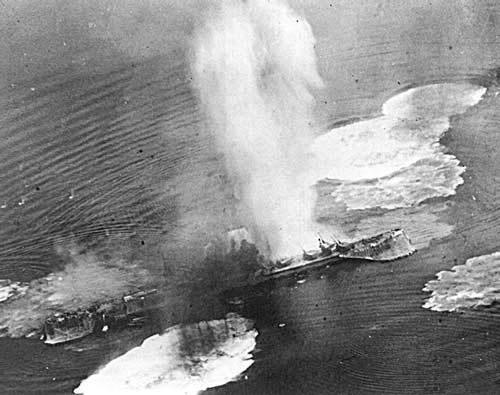
The moment, to put it mildly, was not the best, a large group of American aircraft just flew into the battleship.
When the battleship was sunk, the Tone fought off the planes, but soon got hit by a 127 mm shell fired from the cannon of an American destroyer. God knows what, especially compared to the Musashi.
Already at the end of the battle, a 250-kg bomb hit the Tone. The damaged cruiser went to Brunei, and from there went to the home base of Maizuri, where he was put on a dry dock for repair and modernization.
During the repair on the ship, anti-aircraft weapons were strengthened to 62 automatic 25-mm anti-aircraft guns and installed instead of the radar for airspace survey No. 21, the radar for artillery control No. 22.
Repair continued until February 1945, and at the end of his Tone, he no longer left Japan. The war at sea for Japan actually ended, and the role of the training ship at the naval academy in Itayama became the last place of service for the Tone cruiser.
On July 24, 1945, in Tonejima, during a raid by American carrier-based aircraft, the Tone received three direct hits of 250-kg and 500-kg bombs and seven close explosions, as a result of which lay on the ground and was left by the crew. July 28, he received additional damage with a new raid.
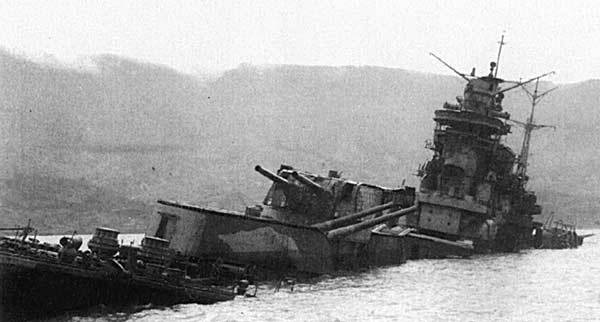
Finally, the "Tone" in 1947-48 was raised and cut into metal.
What can be said as a result?
The Tone, like the Mogami, became the crown of the design mind of Japanese shipbuilders. These were very remarkable ships in all respects, with good navigational data, powerful, albeit original weapons, and, as practice has shown, quite tenacious.
But the most important “highlight” was the possibility of a very quick conversion of cruisers from light to heavy by replacing three-gun towers of 155 mm with two-gun 203 mm.
After breaking the restrictive maritime agreements, the Japanese quickly carried out this operation on ships built and under construction. As a result, Japan had 18 heavy cruisers, like the Americans, at the start of the war.
In fact, it is not as simple as it seems: to take and simply rearrange the towers. It was really just an incomparable mixture of engineering and oriental treachery. So cruisers like "Tone" really together with the "Mogs" are outstanding ships.
True, this did not help Japan at all in that war.
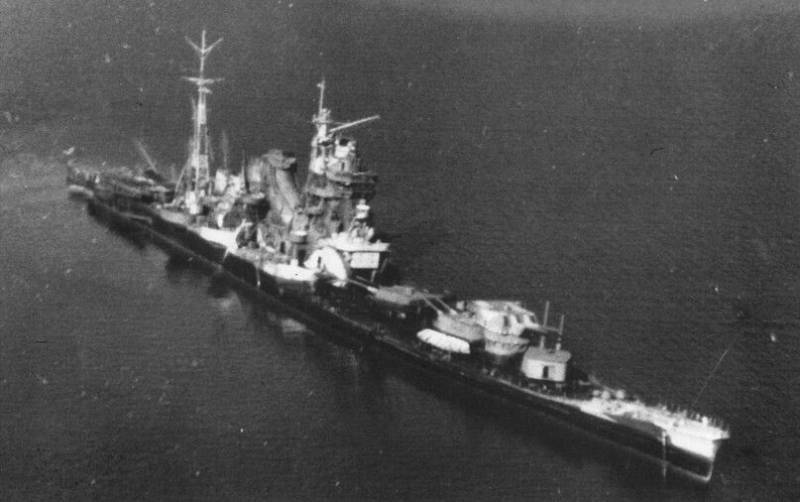


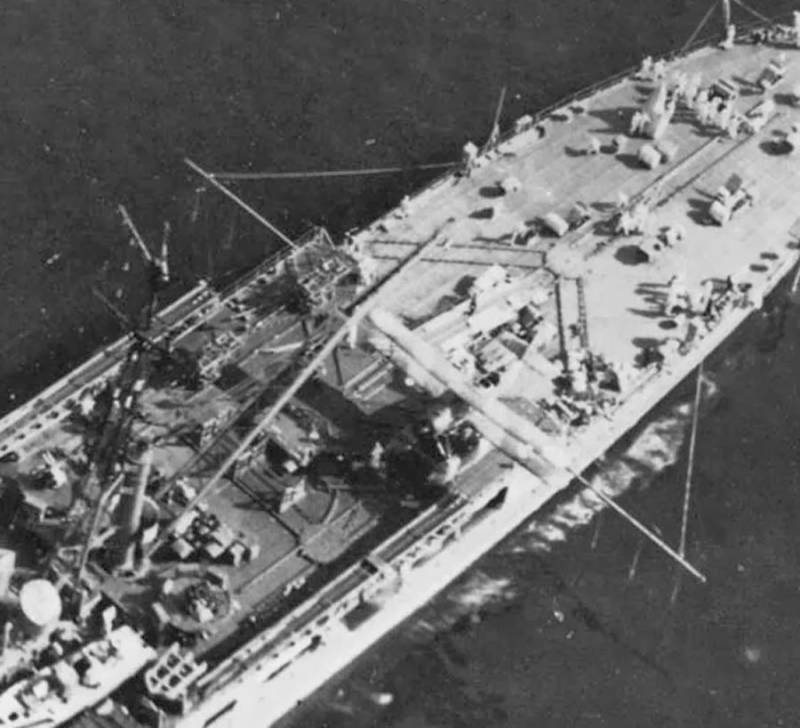
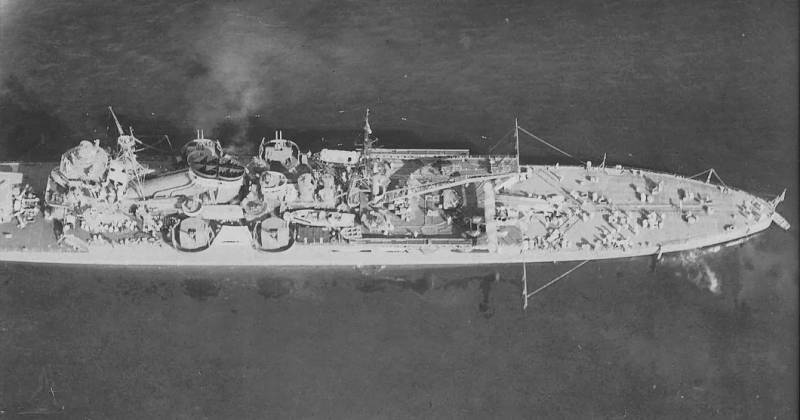
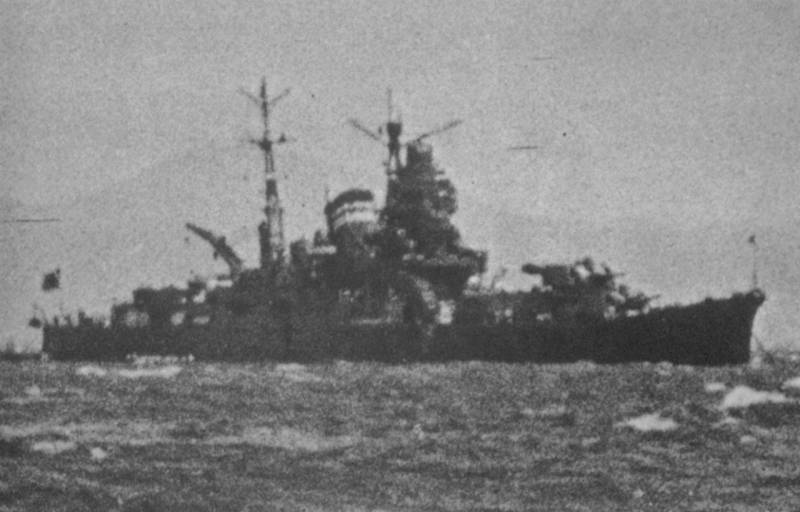
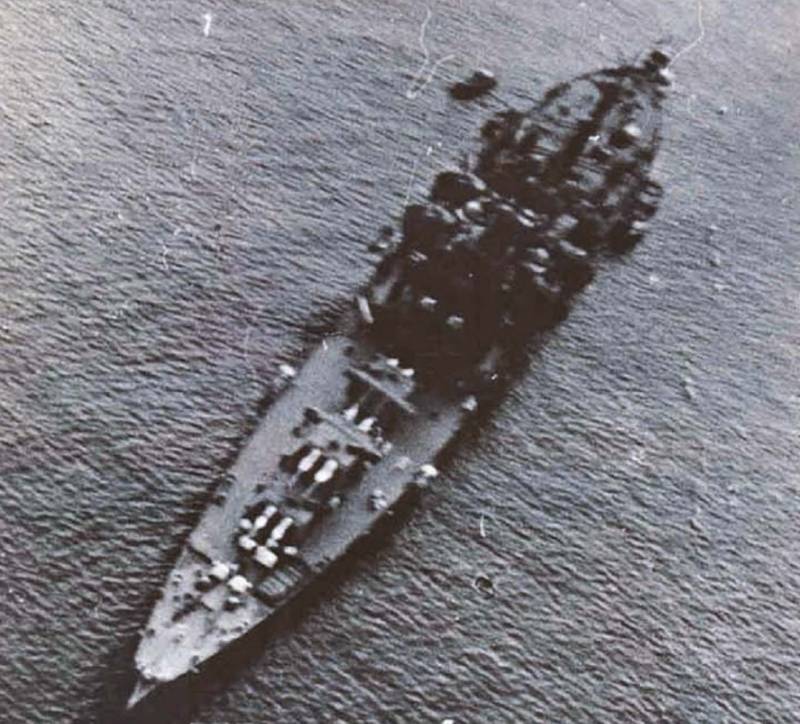
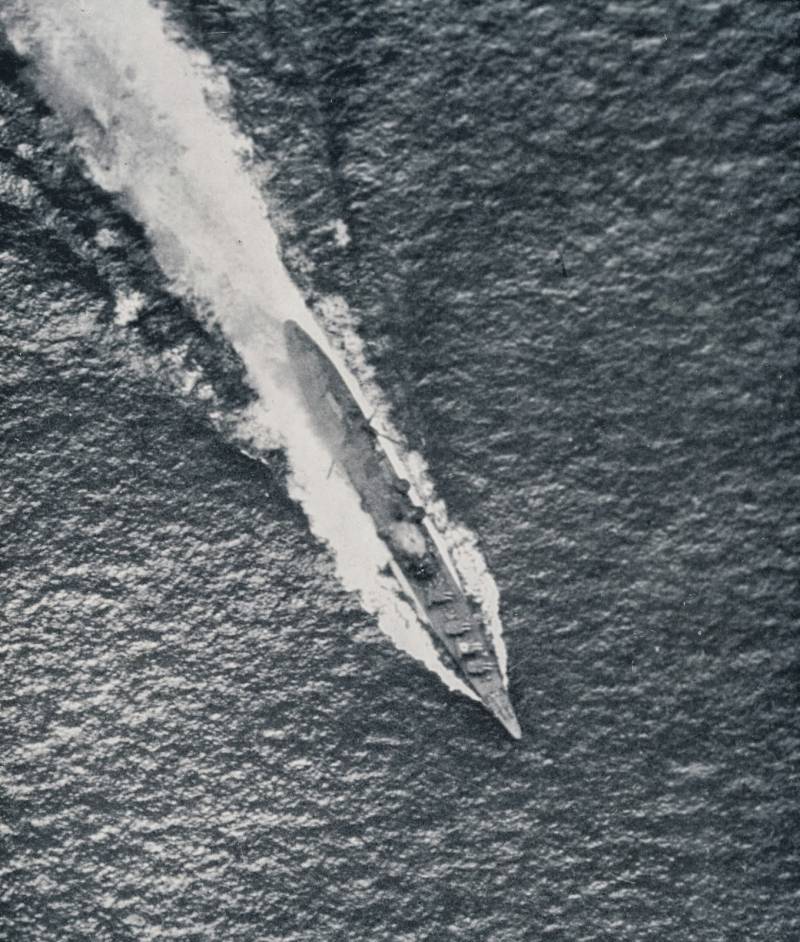
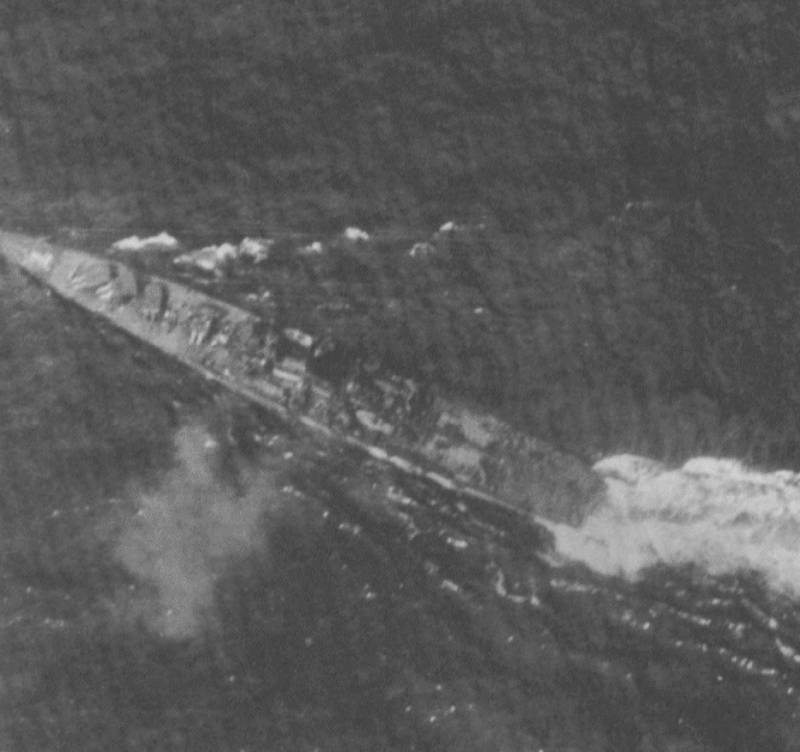
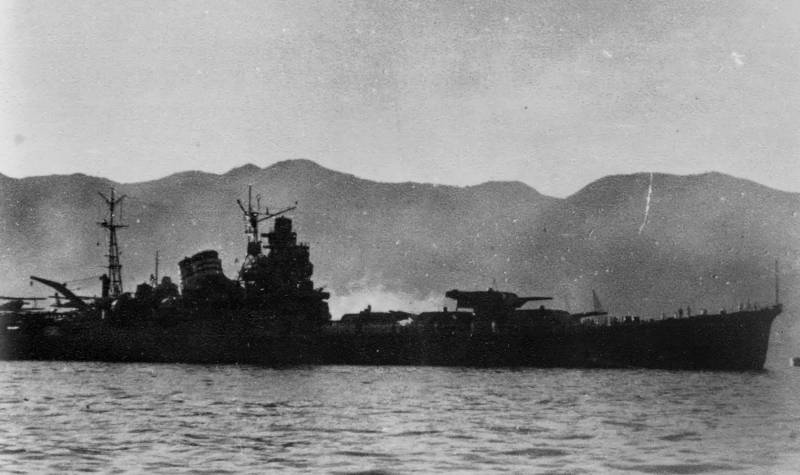
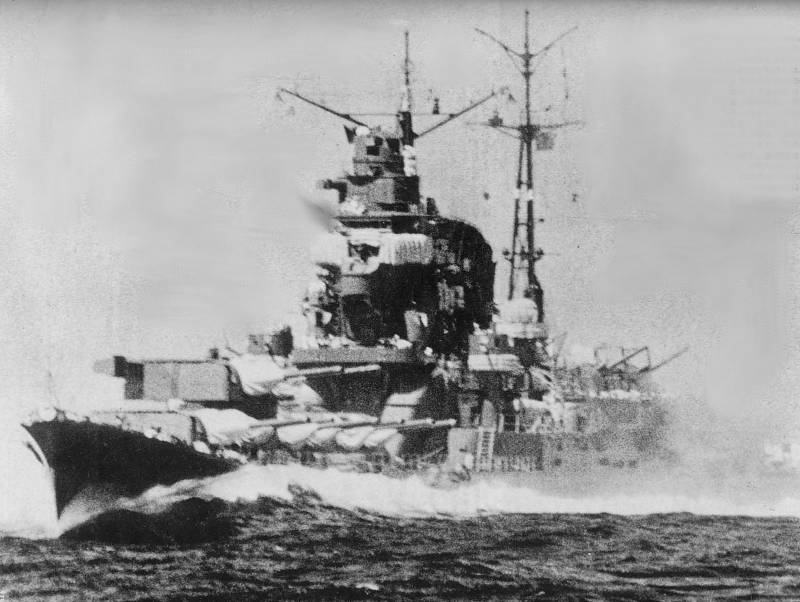
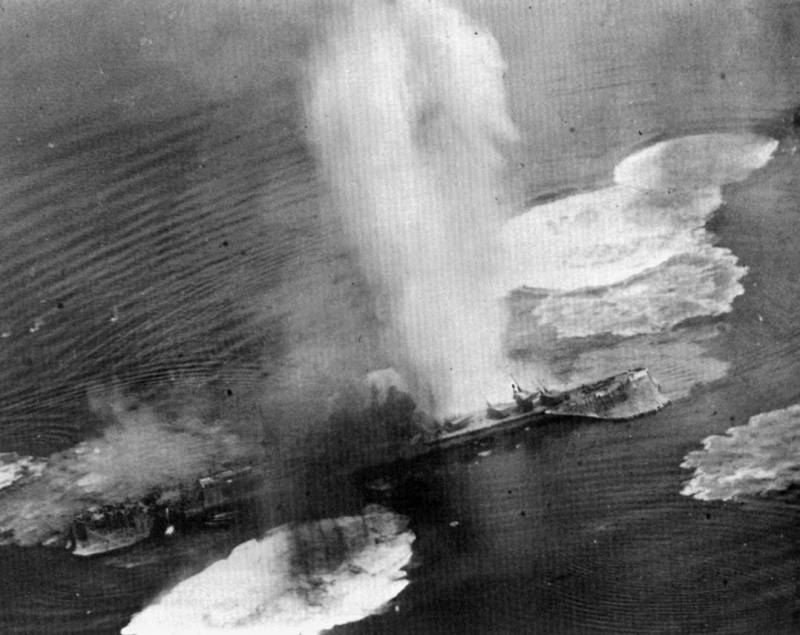
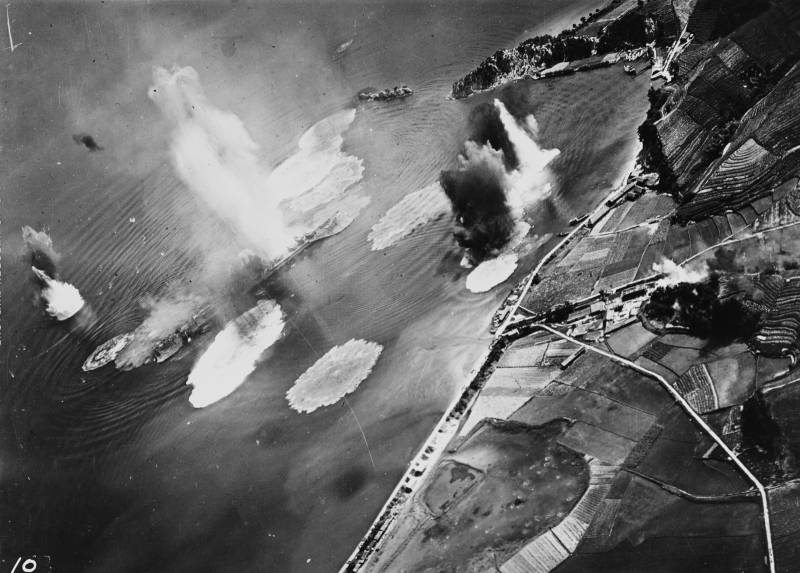
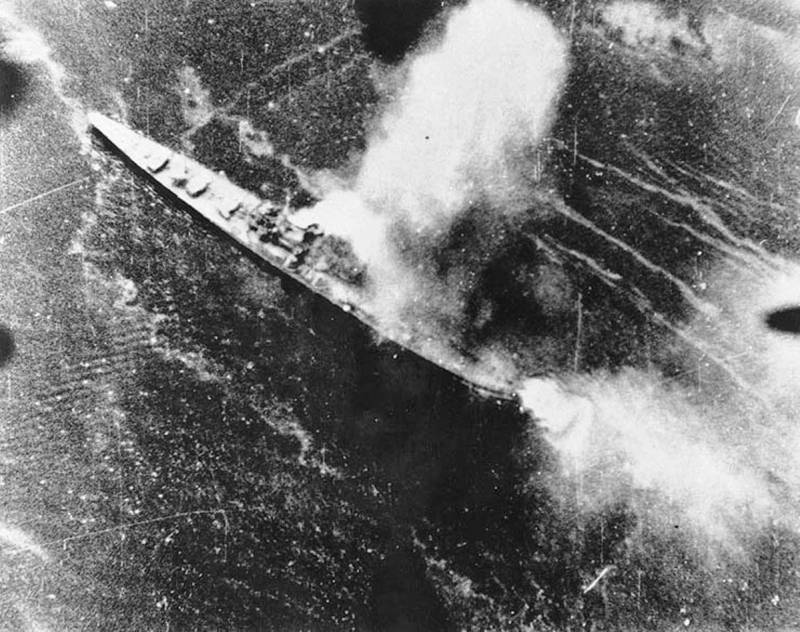
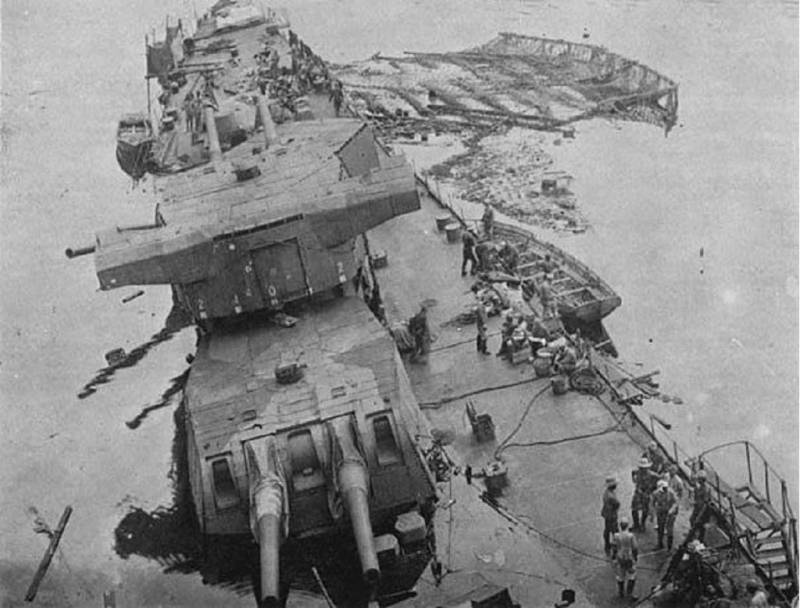
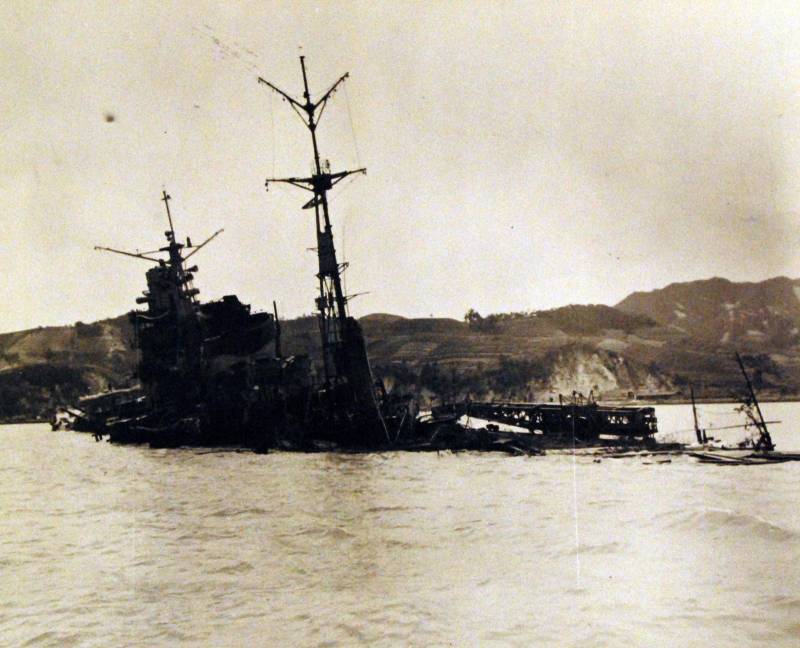
Information